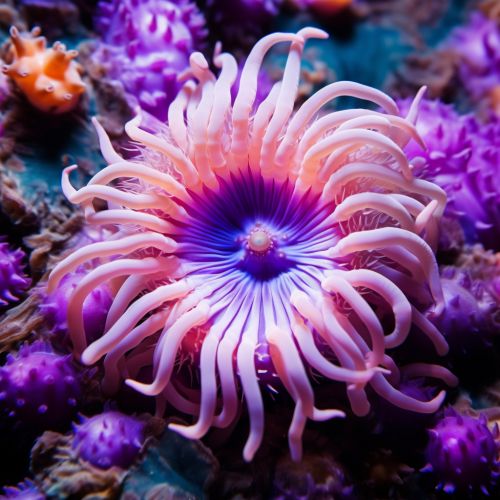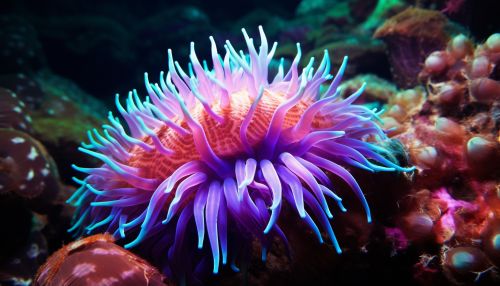Cnidaria
Introduction
The Cnidaria (pronounced with a silent 'C') is a diverse phylum of aquatic animals found in both marine and freshwater environments. This phylum includes well-known species such as jellyfish, sea anemones, corals, and hydras. Cnidarians are characterized by their unique cells called cnidocytes, which contain specialized organelles known as nematocysts that are used for capturing prey and defense.


Classification and Diversity
Cnidaria is a phylum within the Animalia kingdom, which is one of the main groups of the eukaryotic domain. The phylum is divided into four main classes: Anthozoa, Scyphozoa, Hydrozoa, and Cubozoa. These classes encompass over 10,000 described species, making Cnidaria one of the most diverse phyla in the animal kingdom.
Anatomy and Physiology
Cnidarians exhibit a simple body plan, which includes a gastrovascular cavity with a single opening that serves as both a mouth and an anus. They have two main body forms: the sessile polyp and the free-floating medusa. The body of a cnidarian is composed of two main layers of cells: the outer ectoderm and the inner endoderm, separated by a non-cellular layer called the mesoglea.
Cnidocytes and Nematocysts
The defining feature of cnidarians is the presence of cnidocytes, specialized cells that contain nematocysts. Nematocysts are organelles that function as microscopic harpoons, used to capture prey and for defense. When triggered, the nematocyst ejects a barbed thread that can pierce and often inject toxins into the prey or predator.
Reproduction
Cnidarians exhibit a wide range of reproductive strategies, including both sexual and asexual reproduction. Many cnidarians are capable of alternating between these two modes of reproduction in their life cycle, a phenomenon known as alternation of generations.
Ecology and Distribution
Cnidarians are found in a wide range of habitats, from the deepest parts of the ocean to freshwater rivers and lakes. They play crucial roles in their ecosystems, with some species forming large colonies that create habitats for other organisms, such as coral reefs.
Human Interactions
Humans interact with cnidarians in a variety of ways, from their role in supporting biodiversity in marine ecosystems, to their impact on human activities through stinging incidents and their use in biomedical research.
Conservation
Many cnidarian species are threatened by human activities, including climate change, ocean acidification, and destructive fishing practices. Conservation efforts are underway to protect these important and diverse creatures.
